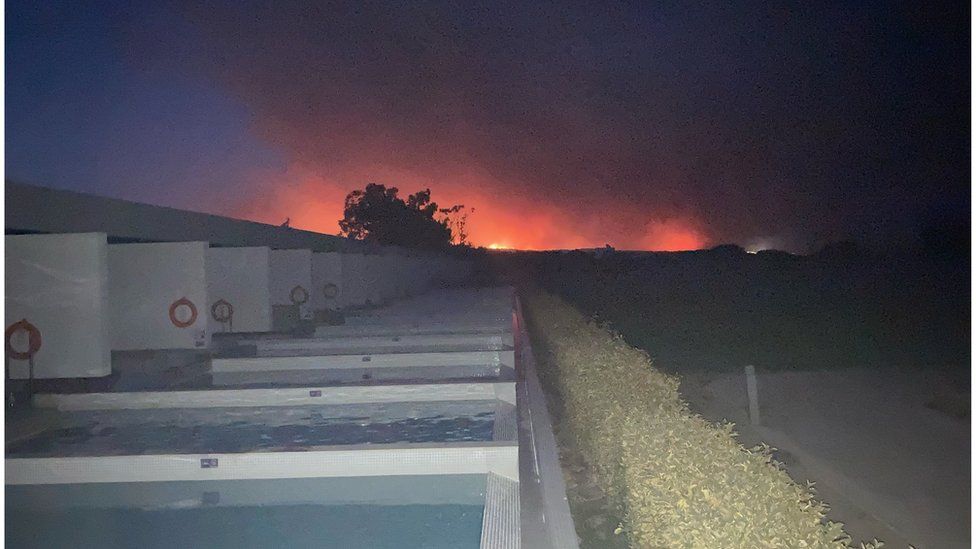Millions of women's lives were impacted and the political landscape was altered by the US Supreme Court's historic decision to end the right to abortion nationwide one year ago.
On June 24, 2022, the Supreme Court of the United States overturned the Roe v. Wade decision from 1973, which had given women the right to an abortion up until the point of viability, or 24 weeks.
The conservative majority on the court gave state legislatures the authority to restrict abortion or outright outlaw it in its Dobbs v. Jackson Women's Health Organization decision.
Pro-choice activists issued a dire public health emergency alert as the anti-abortion movement celebrated a significant victory.
In the past year, the US has changed in the following four ways.
The opposition was ready to profit when the opportunity presented itself after nearly 50 years of fighting to overturn Roe. 13 states had passed "trigger bills" that gave them the ability to start the process of outlawing abortion as soon as the Dobbs ruling was made.
One year later, nearly total bans on abortion from the moment of conception have been enacted in 14 states, including the majority of the South. After six weeks, when most women discover they are pregnant, Georgia outlawed abortion.
The Guttmacher Institute estimates that 22 million women of reproductive age—or about a third of all women who are childbearing age—live in a state where abortion is illegal.
While legal challenges to tighter abortion restrictions are still pending in five other states, another five have passed bans on abortions after 12 to 20 weeks of gestation. The procedure's availability will be restricted for millions more women.
President of Students for Life Kristan Hawkins stated to the BBC in January of last year, during the annual March for Life demonstration, "There's this sense that the end of Roe is catapulting us into an abortion-free future.".
However, the level of access a woman has to an abortion depends on where she lives and which party is in charge there.
While most, if not all, Republican-controlled states have access restrictions, many Democratic-run, progressive states like California and Colorado have strengthened legal protections.
According to the Guttmacher Institute, the last year for which complete data are available, almost a million abortions were performed in the US in 2020. The anti-abortion movement hopes that state-wide bans and stricter regulations will significantly lower the total, but ultimately wants to get it down to zero.
The full effect of the laws already passed is unknown. However, data provided by WeCount, a research project supported by the Society of Family Planning, a pro-choice organization, suggests a significant impact has already been made.
WeCount reports that, compared to an average calculated in the months prior to the Dobbs decision, there were 24,290 fewer legal abortions overall between July 2022 and March 2023. The project monitored abortions delivered in hospitals, clinics, private medical offices, and online-only clinics, but it did not monitor abortions that were self-managed.
States that forbid abortion naturally showed the greatest drops. Contrarily, the number of legal abortions rose, albeit more slowly, in neighboring states where the procedure was protected, particularly Florida, Illinois, and North Carolina.
The WeCount data show that a large number of women in states who desired abortions opted to cross state lines. The nearest abortion clinic may be hundreds of miles away as more states pass bans. .
According to a study found in the Journal of the American Medical Association, this resulted in overall longer journeys.
The average travel time between census tracts and the closest abortion facility was charted in the study. Prior to Dobbs, it took an average of 10 to 27 minutes to get to a clinic. After Dobbs, travel times to the closest clinic nearly increased by a factor of four, averaging over 100 minutes at the upper end.
Texas's ban is being challenged in court, and Dr. Judy Levison, a Houston physician who has been practicing for 40 years and is a plaintiff in the case, is concerned that it will be difficult for the majority of low-income women—who get abortions—to access care.
According to her statement to the BBC, "Where were they going to get an abortion? How were they going to afford traveling, getting childcare, risking two days off work and possibly risking their employment?".
According to Pew Research, the number of Americans who support abortion has remained consistent over the past 30 years, with about 60% of them believing that it should be legal in all or most situations. The think tank discovered that, generally speaking, as a pregnancy progresses, fewer people support abortion.
Public support for abortion, however, has increased in the year since the Supreme Court's ruling. Even in places where bans have been put in place, that has also been the case.
About 31% of people in states that would later enact bans believed that abortion should be more easily accessible in 2019. According to surveys by Pew, however, 46% of people believed it should be simpler in 2023, after those bans had been put in place.
Politics continue to have a significant influence on people's opinions on abortion; 84 percent of Democrats and 40 percent of Republicans, respectively, think that abortion should be legal in most situations. However, when proposed abortion restrictions were put up for a direct vote in conservative states, they were defeated.
Voter initiatives that were defeated in Kentucky and Montana during the 2022 midterm elections put Republicans in a bind. Although the conservative base favors bans and restrictions, they run the risk of alienating more moderate voters who favor keeping abortion legal.
Nada Tawfik and Holly Honderich contributed reporting.







